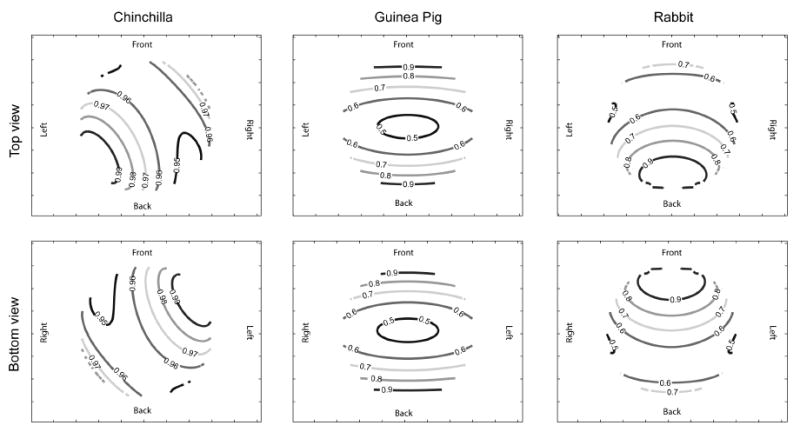Fig. 3.

Relative response of vestibular labyrinth to rotations. The response of the labyrinth to a rotation in any direction (represented by a unit vector projecting from the origin to the surface of the unit sphere) is represented by the value at the point where the rotation vector intersects a unit sphere. All numbers normalized to be a percentage of the labyrinth’s maximal response. Top row, looking down onto unit sphere from above; bottom row, looking up at unit sphere from below. Left column, responsiveness of chinchilla labyrinth; middle column, responsiveness of guinea pig labyrinth derived from Curthoys (1975); right column, responsiveness of rabbit labyrinth derived from Mazza and Winterson (1984), Despite the nonorthogonality of the chinchilla canals, it is relatively evenly responsive to rotations in all directions while the guinea pig and rabbit are much more sensitive to roll rotations than pitch or yaw rotations.
